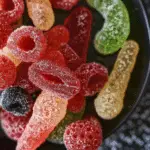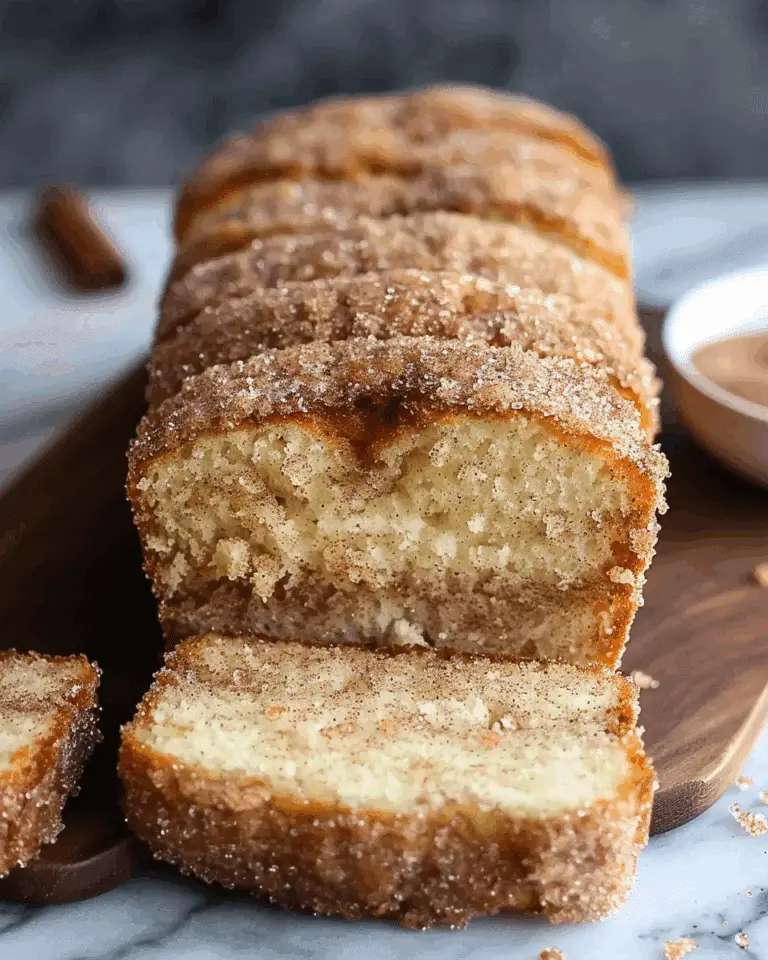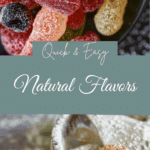When I pick up a box of granola bars or crack open a can of flavored sparkling water, seeing “natural flavors” on the label usually gives me a sense of comfort. It sounds fresh, safe, and more trustworthy than “artificial flavors.” But over time, I’ve learned that this innocent-sounding label might be masking a far more complex — and sometimes concerning — reality.

Why I Love Learning About This
I like understanding what’s in my food because it gives me more control over my health. Diving into what “natural flavors” really means helped me realize how vague and misleading some food labeling can be. What sounds natural may actually include a mix of synthetic chemicals, additives, and even preservatives — and manufacturers don’t have to tell me any of it.
Ingredients
(Here’s a tip: Check out the full list of ingredients and measurements in the recipe card below.)
The main “ingredient” under scrutiny here is natural flavors. But that single term could include:
-
Essential oils
-
Extracts and distillates
-
Protein hydrolysates
-
Compounds from roasting, heating, or fermentation
-
Solvents, emulsifiers, and preservatives (even synthetic ones)
All of these can legally be included under “natural flavors” — and I’d never know the exact makeup unless a company chose to disclose it voluntarily.
Directions
Here’s how I now approach food labels:
-
Be critical when I see “natural flavors” — it doesn’t always mean healthy or simple.
-
Choose products with specific ingredients like “lemon juice” or “vanilla extract” instead of vague flavoring terms.
-
Reach out to companies if I have allergies or dietary concerns and need clarity on what “natural flavors” includes.
-
Limit ultra-processed foods and prioritize whole, minimally processed items when possible.
-
Stay informed by learning how labeling laws work and how they can sometimes favor manufacturers over consumers.
Servings and timing
This isn’t a recipe I’m cooking in the kitchen, but it’s certainly food for thought. I’d recommend spending 10–15 minutes the next time I go grocery shopping to read labels more carefully. It’s a small habit that can have a big impact over time.
Variations
Here are a few ways I’ve adapted my shopping and eating habits since learning about this:
-
I’ve started buying more organic and whole food products that list each ingredient clearly.
-
I often shop at local markets where I can ask vendors directly about their products.
-
When I do buy packaged foods, I look for “flavored with real fruit” or “no natural or artificial flavors” on the label.
-
I stick to homemade versions of flavored snacks like granola, dressings, and even beverages so I know exactly what’s in them.
storage/reheating
Since I’m dealing with information and not actual food, what I’m really storing here is awareness. But if I translate this into practice — like making homemade alternatives — I make sure to:
-
Store them in airtight containers
-
Use fresh ingredients
-
Avoid unnecessary preservatives by preparing small batches I can finish in a few days

FAQs
What exactly does “natural flavors” mean?
It’s a legally defined term that refers to flavoring substances derived from natural sources, but the full mixture can include additives and chemicals that aren’t disclosed to me on the label.
Are natural flavors better than artificial ones?
Not necessarily. While they come from natural sources, they can still be processed and mixed with synthetic substances. In some cases, they may be no safer or healthier than artificial flavors.
Can natural flavors include allergens?
Yes, and that’s the scary part. Since manufacturers aren’t required to disclose everything in “natural flavors,” allergens can sometimes be hidden. I always contact the company if I have specific concerns.
Are natural flavors vegan or vegetarian?
Not always. Some natural flavors are derived from animal sources like meat or dairy. I always check for vegan labels or certifications if that matters to me.
How can I avoid hidden additives in natural flavors?
I stick to products with clear labeling, minimal ingredients, or brands that voluntarily disclose what’s in their flavorings. Whole foods are always a safe bet.
Conclusion
What I’ve learned is this: “natural flavors” is more of a marketing term than a nutritional promise. It hides a world of chemical complexity behind a feel-good phrase. That’s why I’ve become a more careful label-reader, asking more questions and choosing transparency whenever I can. My food choices are mine to make — but only if I know what I’m really eating.
Print
“Natural Flavors”: The Food Labeling Loophole That Could Be Hiding Hundreds of Chemicals in My Food
- Total Time: 10–15 minutes (reading labels while shopping)
- Yield: N/A
- Diet: Gluten Free
Description
The term ‘natural flavors’ on food labels often gives a sense of safety, but it can hide a complex mix of chemicals, additives, and synthetic substances. Understanding what it really means empowers me to make more informed food choices.
Ingredients
- Natural flavors (umbrella term)
- Essential oils
- Extracts and distillates
- Protein hydrolysates
- Compounds from roasting, heating, or fermentation
- Solvents, emulsifiers, and preservatives (sometimes synthetic)
Instructions
- Read food labels critically — ‘natural flavors’ doesn’t always mean healthy.
- Choose products with clearly listed ingredients like ‘vanilla extract’ or ‘lemon juice.’
- Contact companies if you have dietary restrictions or allergies and need more transparency.
- Limit ultra-processed foods and prioritize whole or minimally processed items.
- Stay informed about labeling laws and marketing tactics that can mislead consumers.
Notes
- ‘Natural flavors’ may legally contain additives and chemicals not disclosed on the label.
- They can include allergens or animal-derived substances.
- Products labeled ‘vegan’ or ‘no natural/artificial flavors’ are more transparent.
- Whole foods and homemade alternatives offer greater ingredient control.
- Prep Time: 0 minutes
- Cook Time: 0 minutes
- Category: Informational
- Method: Research & Awareness
- Cuisine: N/A
Nutrition
- Serving Size: N/A
- Calories: 0
- Sugar: 0g
- Sodium: 0mg
- Fat: 0g
- Saturated Fat: 0g
- Unsaturated Fat: 0g
- Trans Fat: 0g
- Carbohydrates: 0g
- Fiber: 0g
- Protein: 0g
- Cholesterol: 0mg







